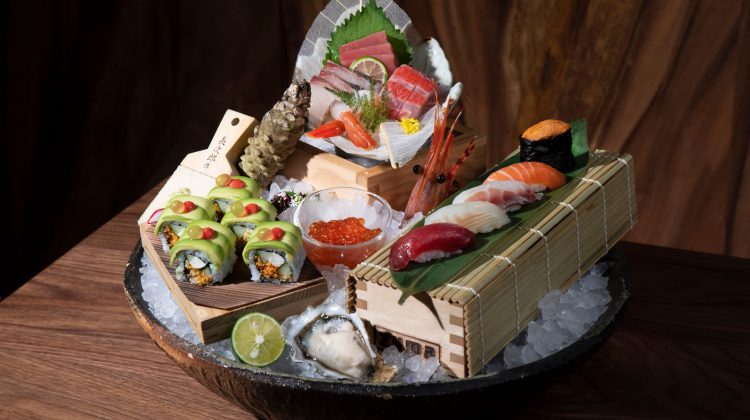
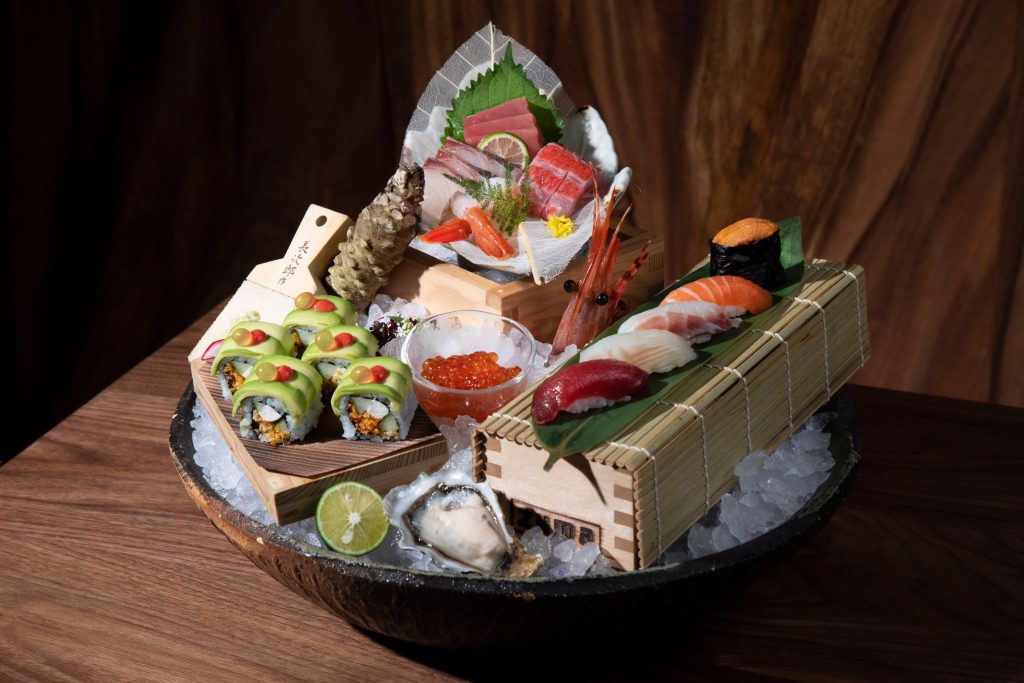
Sushi, an exquisite culinary art form, has captured the hearts and palates of food enthusiasts worldwide.
In this blog, we’ll take you on a global tour to discover the seven best sushi restaurants, each a temple of sushi craftsmanship.
From the iconic Sukiyabashi Jiro in Tokyo to the innovative Sushi Nakazawa in New York City, get ready to embark on a sushi adventure like no other.
Join us as we explore what sets these establishments apart and sample their exceptional creations.
Let’s dive into the world of sushi and uncover the “7 Must-Visit Sushi Restaurants” that promise an unforgettable dining experience.
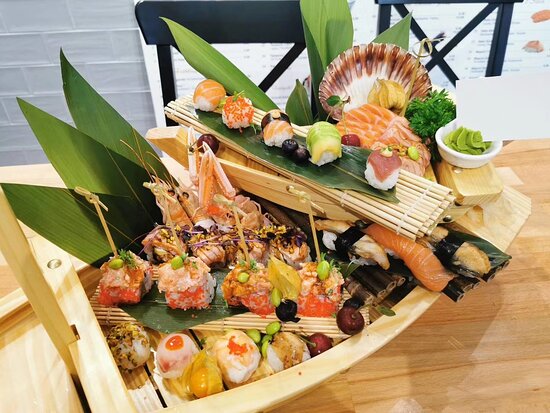
Certainly, here’s a more detailed look at what makes each of these sushi restaurants stand out, along with some examples of the types of sushi they typically offer on their menus:
Sukiyabashi Jiro – Tokyo, Japan
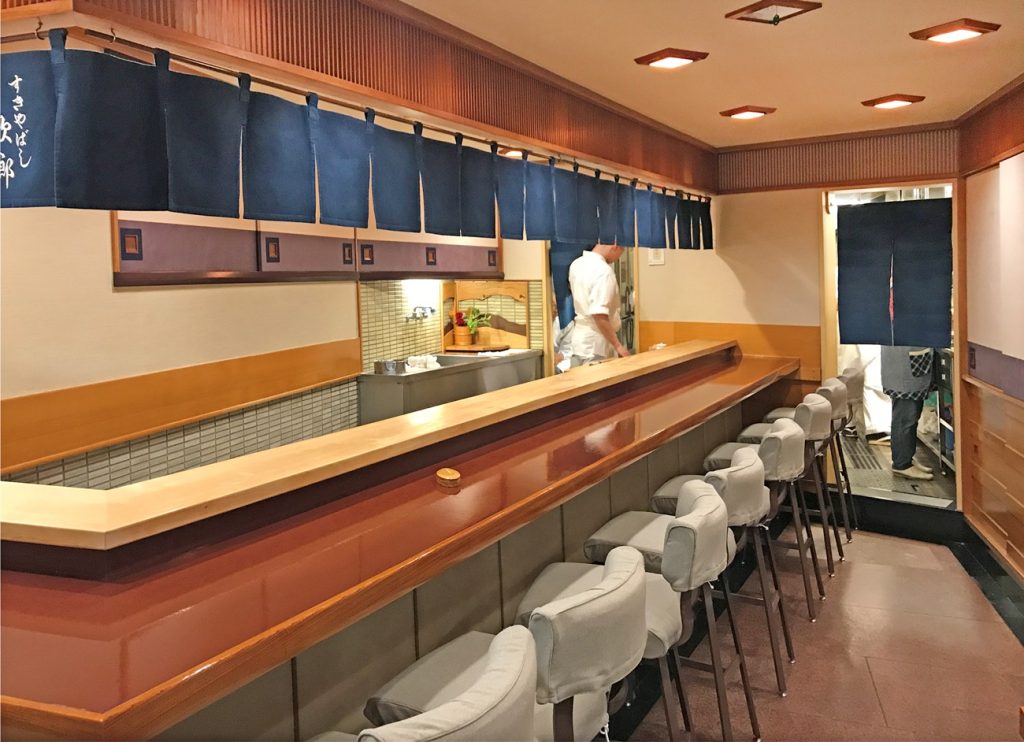
Sukiyabashi Jiro is often considered one of the world’s best sushi restaurants due to its unwavering commitment to perfection.
Chef Jiro Ono, the master behind the counter, has dedicated his life to perfecting the art of sushi.
The restaurant’s omakase menu features the freshest and most exquisite ingredients, primarily sourced from Tokyo’s Tsukiji Fish Market.
You can expect to savor a variety of nigiri sushi, showcasing a range of fish, such as maguro (tuna), hamachi (yellowtail), and uni (sea urchin), all expertly prepared to highlight their unique flavors.
Sushi Nakazawa – New York City, USA
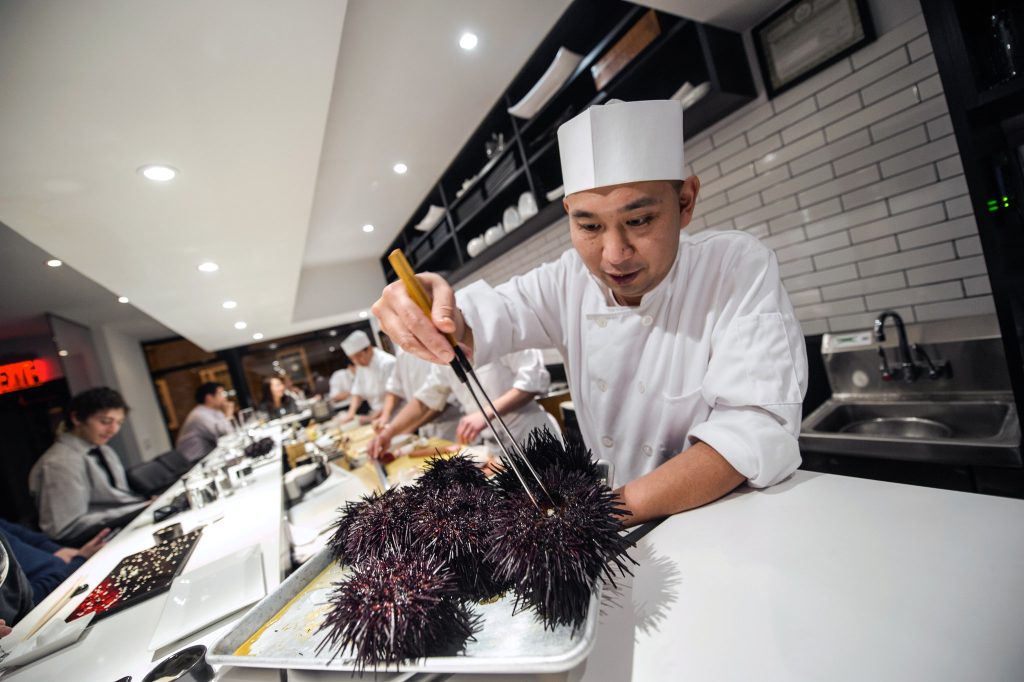
Sushi Nakazawa in New York City is renowned for its commitment to the traditional Edomae style of sushi.
Chef Daisuke Nakazawa, a disciple of Jiro Ono, brings his own flair to the table.
The omakase menu at Nakazawa offers a diverse selection of sushi, often featuring seasonal fish like kinmedai (goldeneye snapper), kohada (gizzard shad), and the signature tamago (sweet omelet) for dessert.
Mizumi – Las Vegas, USA
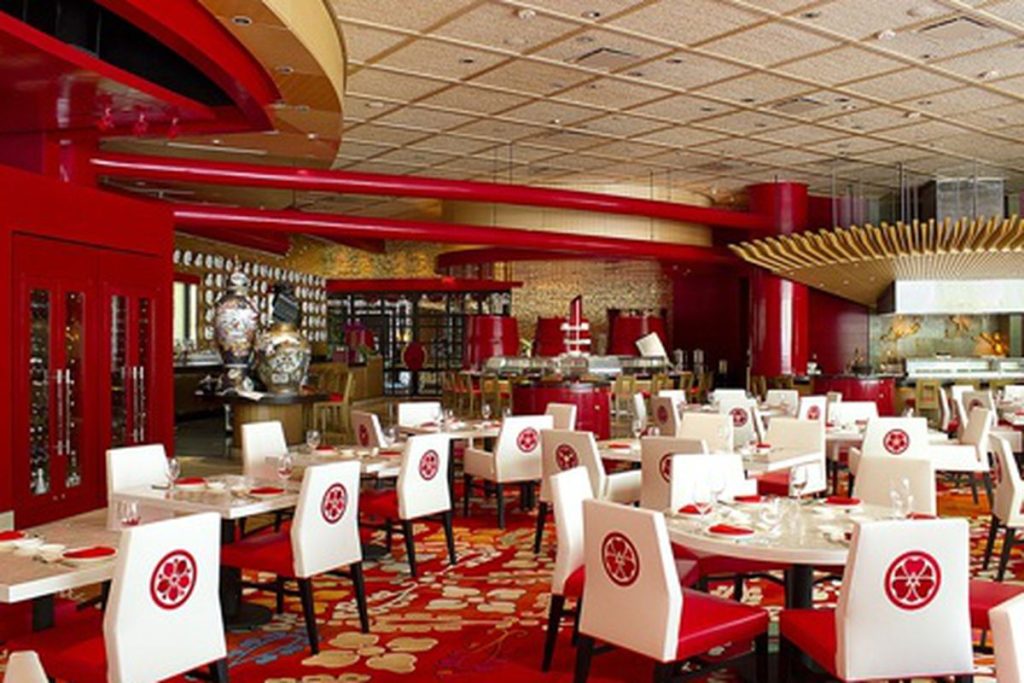
Mizumi, located in the luxurious Wynn Las Vegas, offers a unique blend of traditional and modern sushi.
The menu includes a wide array of sushi and sashimi options, with highlights such as the Mizumi Trio, a sampler of three premium sashimi selections, and specialty rolls like the Mizumi Dragon Roll, featuring eel and avocado with sweet soy glaze.
Sukhothai – Bangkok, Thailand
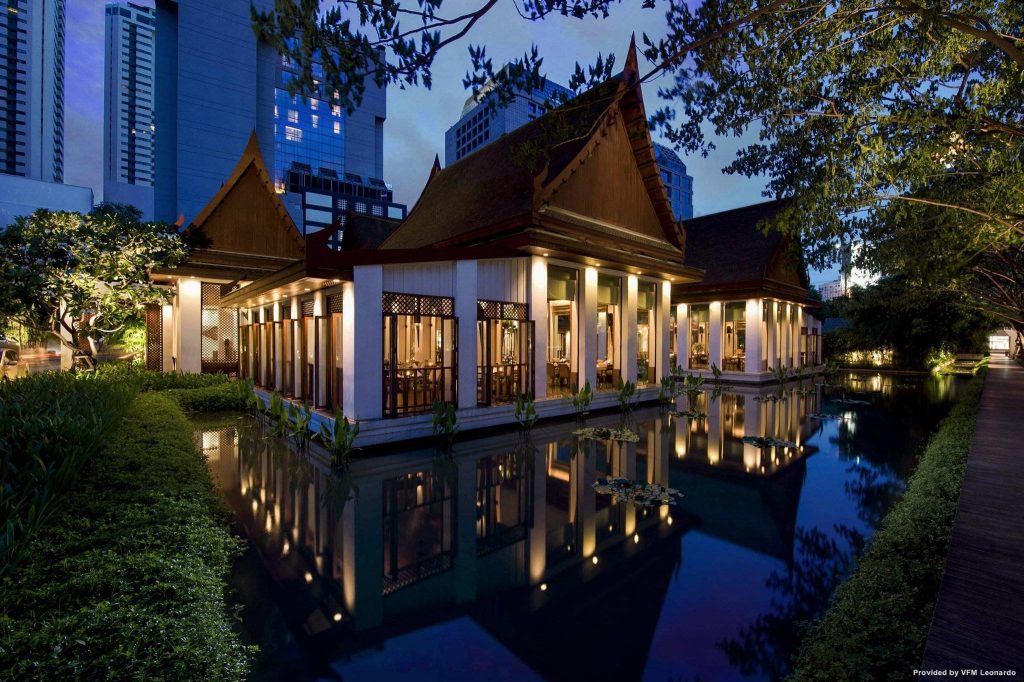
Sukhothai in Bangkok stands out for its fusion of Thai and Japanese flavors in its sushi creations.
Here, you’ll find innovative rolls like the Thai Spicy Tuna Roll, which combines the heat of Thai spices with the freshness of tuna, and the Tom Yum Roll, inspired by the famous Thai soup.
Kyubey – Tokyo, Japan
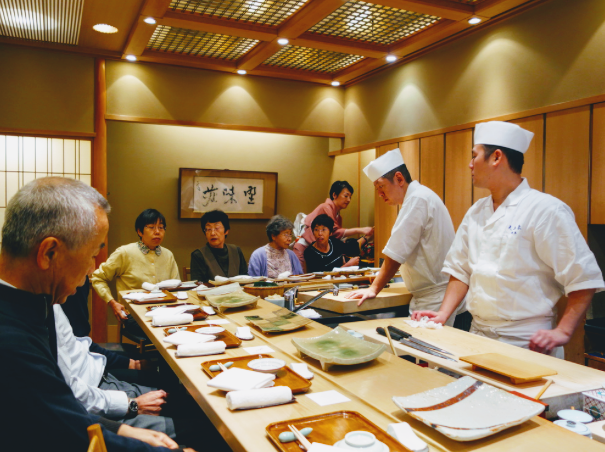
Kyubey has earned a loyal following in Tokyo for its Edo-style sushi.
The menu includes a variety of nigiri sushi, such as hotate (scallop), iwashi (sardine), and anago (saltwater eel). The simplicity and precision of their sushi preparation are key to its appeal.
Sushiso Masa – Kyoto, Japan
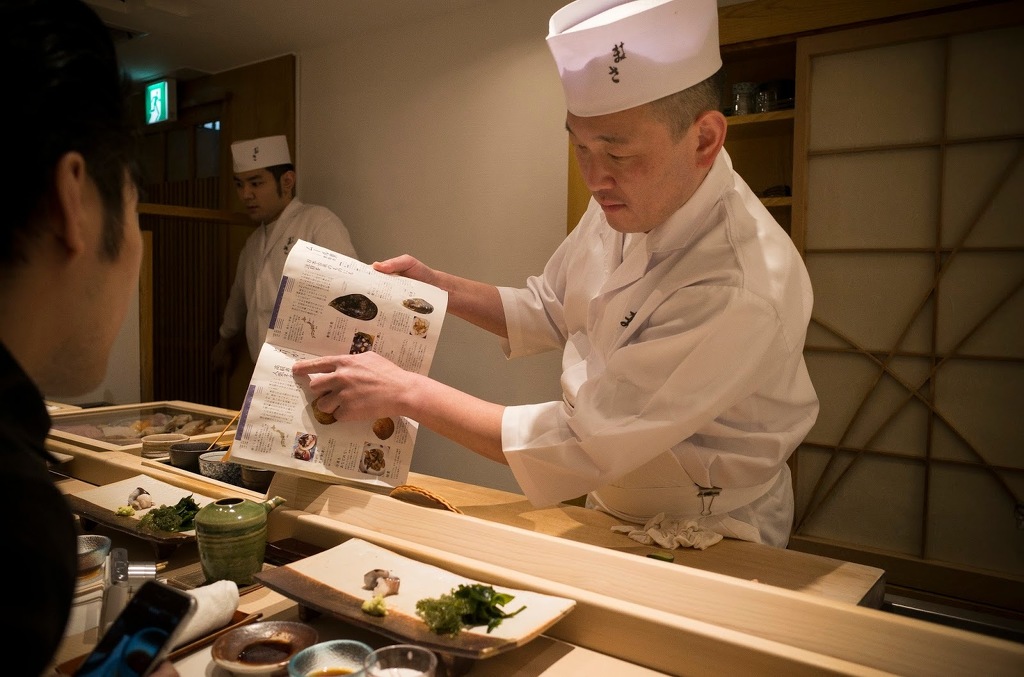
Sushiso Masa in Kyoto offers an intimate dining experience with a focus on artful sushi presentation. Their omakase menu may feature seasonal Kyoto ingredients like ayu (sweetfish), kinome (sansho leaf), and local Kyoto vegetables in beautifully crafted sushi.
Sushi Saito – Tokyo, Japan
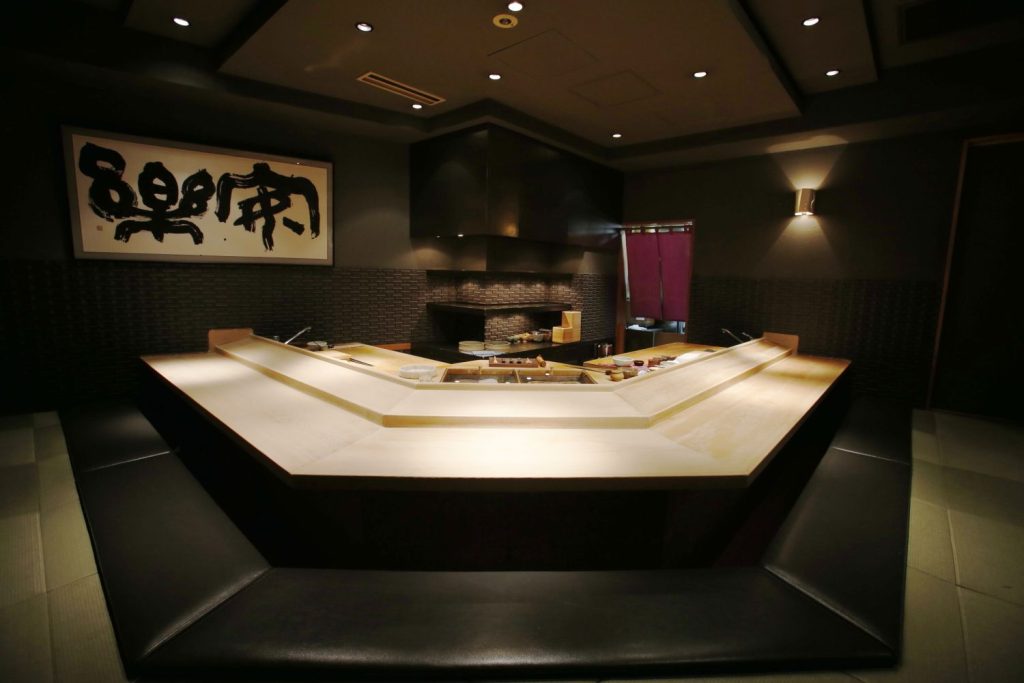
Sushi Saito is celebrated for its exceptionally fresh and flavorful sushi. You can expect to enjoy a selection of nigiri, including uni from Hokkaido, akagai (ark shell), and melt-in-your-mouth otoro (fatty tuna), all prepared with unparalleled skill and precision.
Frequently Asked Question
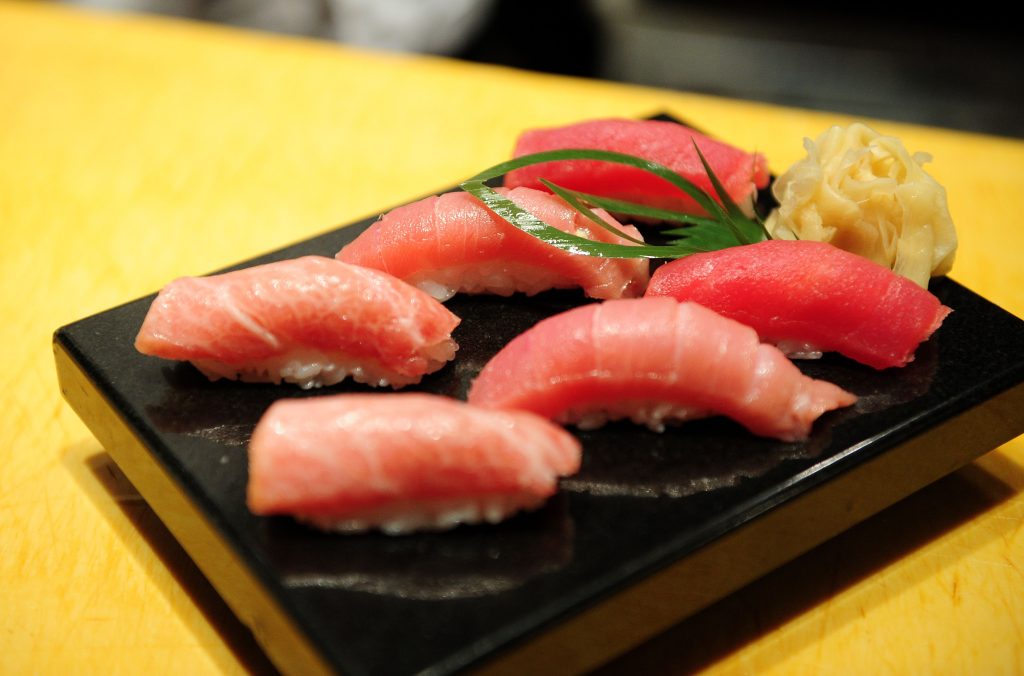
Which country is best known for sushi?
Japan is undoubtedly the country best known for sushi. Sushi is a cornerstone of Japanese cuisine and culture, with a rich history dating back centuries.
Japan’s commitment to sourcing the freshest ingredients and its meticulous sushi-making techniques have elevated sushi to an art form. While sushi is enjoyed worldwide, experiencing it in its birthplace remains a culinary pilgrimage for food enthusiasts.
What is sushi chef called?
A sushi chef is commonly referred to as an “itamae” in Japan. The term “itamae” translates to “in front of the board,” signifying the chef’s position at the sushi preparation counter.
Itamae chefs undergo extensive training and apprenticeships to master the art of sushi-making, from selecting the freshest ingredients to crafting exquisite sushi creations with precision and skill. Their expertise and dedication to the craft are integral to delivering the exceptional sushi dining experience that is revered worldwide.
How much is the most expensive sushi?
A restaurant in Osaka, Japan has created a record for the world’s most expensive sushi. Its Kiwami Omakase, a course comprising 20 pieces of sushi, costs a whopping ¥3,50,000 ($2,420) (Rs 2,00,467).
Who invented sushi?
Sushi, in its early form, was invented in Southeast Asia as a method of preserving fish by fermenting it with rice and salt. However, the modern concept of sushi, as we know it today, was developed in Japan during the Edo period (17th-19th century).
This innovation involved using vinegar-seasoned rice as a base and pairing it with fresh fish and other ingredients. Hanaya Yohei, a street vendor in Edo (now Tokyo), is often credited with popularizing this style of sushi, leading to the sushi we enjoy today.
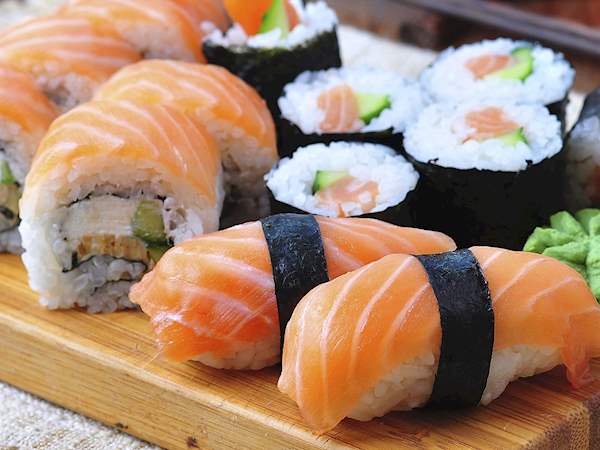
Why sushi so expensive?
Sushi can be expensive for several reasons. Firstly, high-quality sushi relies on the freshest and often rare ingredients, such as premium-grade fish and seafood, which come at a cost.
Secondly, the skill and expertise of sushi chefs, who undergo years of training, are highly valued. Additionally, the meticulous preparation and artistry involved in crafting sushi contribute to its price.
Finally, the ambiance and dining experience offered by upscale sushi restaurants also factor into the overall cost. While sushi can be a splurge, it’s often considered a delicacy worth indulging in for its exceptional taste and craftsmanship.
How healthy is sushi?
Sushi can be a healthy dining choice, as it often includes fresh fish, vegetables, and rice.
Fish like salmon and tuna are rich in omega-3 fatty acids, which are beneficial for heart health. However, sushi’s healthiness can vary depending on the ingredients and preparation methods.
Sushi rolls with fried or mayo-based ingredients can be higher in calories and less healthy. Also, consuming sushi in moderation is advised due to potential risks associated with raw fish, such as mercury content. Overall, when chosen wisely and enjoyed in moderation, sushi can be a nutritious and delicious option.
Related Articles
Essential Houston Restaurants in 2023
The Lowest Calorie Desserts (ice cream) at Dairy Queen (DQ)
The best high protein and low calorie options at Subway
What Is Huitlacoche — And Why Aren’t U.S. Diners Eating More of It?
Conclusion
Our voyage through the “7 Best Sushi Restaurants” has been a journey of taste and tradition. From Tokyo to New York, Bangkok to Kyoto, these sushi destinations offer unforgettable culinary experiences. Sushi’s artistry and dedication shine through at every turn.
Whether you’re a sushi aficionado or a newcomer, these culinary treasures await, promising to leave a lasting impression on your journey.
